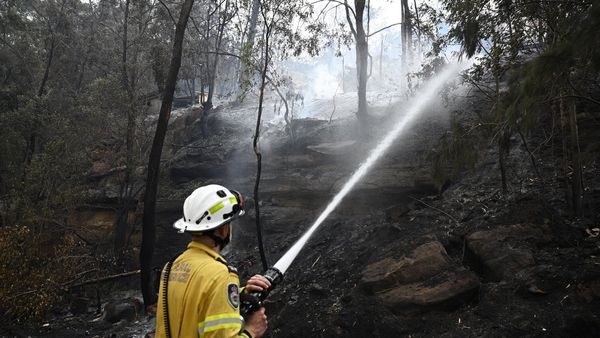
Slugs have not inspired much poetry – though this line from Brian Swann is nice: “Turn them over, they’re the soles of new shoes, / pale and unmarked as babies.”
Virginia Woolf insulted her enemies, herself and the perfectly nice city of Brighton with slug name calling. In an essay called Spiralling around Snails and Slugs in Virginia Woolf Miscellany, Elisa Kay Sparks lists these insults. “Poor creature! He knows he’s but a slug”; a “white and voluble slug”; “Brighton a love corner for slugs”. When she is lonely, Woolf writes, “I relish the commonest animated slug”; when she is sick: “I turned over like a slug and slept the month of February out”.
Few would rush in to defend the slugs from Woolf’s pen. Slugs have not been well loved by us. But someone believed in them: the very first Japanese version of rock, paper, scissors – a type of game known as a “ken” – was “slug, frog and snake”, or mushi-ken.
The frog (thumbs up) killed the slug (pinkie finger up); the snake (index finger hooked) killed the frog, and the slug killed the snake.
A slug killing a snake? It was a mistranslation of the Chinese version of the game, in which the slug was a centipede. A centipede killing a snake makes sense. A slug, not so much. But I like to think that when the Japanese person who confused the words for centipede and slug first confused them, she – and she may well have been a she, because the game was played in brothels – believed in the power of the slug.
The slug gets its power from the knowledge that it has 27,000 teeth and a lot going on beneath its greyish brownish greenish slimy skin. The slug – how do I explain this? – the slug is so much weirder than you know.
If you look at a slug properly – and who can resist? – you see that it is symmetrical, like the vast majority of living things. It has two tentacles for seeing, like eyes, and it has two tentacles for smelling, like nostrils.
But keep looking: it has a hole on just one side of its body. This hole is called a pneumostome, or breathing pore: it is visible to the naked eye, and usually on the right-hand side (the slug’s right, that is).
This asymmetrical pore is the only external clue to what is going on inside the slug. And what is going on inside the slug is very, very strange.
When slugs are larvae, their organs are one way. Then at some stage, their organs rotate 180 degrees, so that the anus is above the head and mouth. The nerves running to and from their organs – their visceral nerves – which once ran parallel, are now twisted into a figure of eight. Their single lung now lies on one side of their body – hence the pore.
What an adolescence! Slugs evolved from snails, not the other way round. They eschewed their shell. The twisted insides and the lack of hard protection makes them seem as though they are stuck midway through a transformation, as though they are never quite adult. Slugs are emblems of teenagehood: I like to think they chose to be that way. Agreeing to the symmetrical outside, but keeping their insides as two worlds twisted together: the world of childhood and the world of adulthood.
Behold the slug and you behold a teenager, in all of her magic and power: what teenager does not feel themselves to be a little slimy, as though everything they do leaves a gross trail everyone else can see? (Who, of any human creature, is likeliest to have 27,000 tiny mean teeth?). They lift their heads and wave their little feelers around: they see the future, and though it scares them a little, they march towards it. But they leave a trail back to childhood just in case. Those trails shimmer in the sun.
Helen Sullivan is a Guardian journalist. Her first book, a memoir called Freak of Nature, will be published in 2024. She will be appearing in conversation with science journalist Ed Yong in Melbourne on 14 October for the Wheeler Centre’s Spring Fling
Have an animal, insect or other subject you feel is worthy of appearing in this very serious column? Email helen.sullivan@theguardian.com







